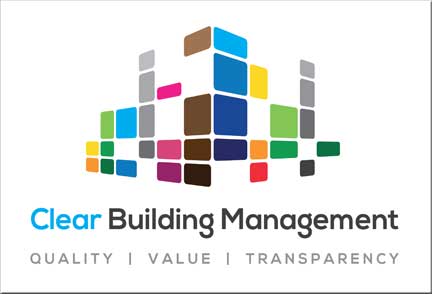Earlier this month the Daily Telegraph reported LKP research finding that sales of modern flats have fallen 60 per cent in volume as a result of the cladding / building safety crisis.
This week the newspaper reports that resale values of flats are trailing behind that of other residential property, with flats in Leeds the worst hit with new builds since the year 2000 40 per cent behind local prices. The data was provided by market analyst BuildPlace.
LKP’s figures from the Land Registry demonstrate that there were only 15,163 flat sales in England and Wales between April and June this year – a drop from 37,924 in the same quarter in 2018.
Is the flat market in the UK broken?
Flats are falling out of favour. We have never been a nation of apartment-dwellers, sauntering through lobbies and shoving bags into bin chutes as many of our American cousins happily do. But an acute housing shortage and rapid population growth in the cities have led to dense residential skyscrapers, crammed with as many flats as they can hold.
LKP chair Martin Boyd was quoted: “It stands to reason that the inability of thousands of leaseholders to sell their homes would be clogging up the housing market, and our research suggests that this indeed the case.
“Many of the flats involved are starter homes, which represent the first rung on the housing ladder.”
The newspaper quoted an unnamed “senior source” acknowledging that as well as being “unjust” for many flat owners, problems with combustible cladding, insulation and balcony decking were now having a “chilling effect on the market”.
Cladding crisis ‘chilling’ property market because leaseholders cannot sell flats
New regulations banning the use of combustible materials on residential buildings were introduced in the wake of the Grenfell Tower fire in 2017. But in recent years leaseholders have been saddled with hefty bills to replace combustible cladding, insulation and balcony decking that has been outlawed.
The purchase of new build flats is increasingly seen as a dubious prospect with purchasers in the UK – and around the world – now aware of the risks of huge bills to rectify historic build defects falling overwhelmingly on the hapless consumers.
Help To Buy loans of 20 per cent (40 per cent in London) to purchasers who can raise 5 per cent deposits have driven the domestic market in the past but is tailing off fast, the LKP figures suggest.
Why your new-build flat could be worth 40pc less than you think
Government schemes such as Help to Buy and shared ownership, which allows buyers to get a mortgage on only a portion of a property and pay rent on the rest, mean that first-time buyers are hit hardest by disappearing new-build premiums. When Steve Lewis, 49, bought his first home, a two-bedroom, shared-ownership flat in north London in July 2018, the property’s total sale price was £473,000.
Whereas new build houses begin to echo the wider second-hand re-sale market after seven years, the picture is far worse for new flats.
“In Leeds, flats bought new in 2000 lagged rising local property prices by 25 percentage points when sold 10 years later,” the newspaper reported BuildPlace research.
“After 20 years, the gap had widened to 40 percentage points. In Northumberland, over the same 20-year period new-build flat prices trailed the local market by 30 percentage points.”
Scott Bacon, of estate agents William H Brown, is quoted on the effects of the cladding / building safety crisis on vales in Leeds.
“There is a massive number of apartment buildings in the city centre where the owners can only sell to cash buyers. To do that, they have to accept at least a 30 per cent discount. I have seen some go for 50 per cent off.”
Hamptons estate agents also reports that sellers in 2021 who sold off their new-build flats after 11-15 years of ownership made an average gain of just 6 per cent.
People who sold second-hand flats, on the other hand, made average gains of 35 per cent in the same period.
Sellers of second-hand houses saw a price jump of 42 per cent, while sellers of new-build houses saw rises of 25 per cent.
New build properties traditionally sell for a 20 per cent premium, ostensibly because they will pay less on repairs – which will prompt a mirthless laugh from leaseholders caught up in the cladding / building safety scandal.
The issue will not just be a concern to hapless buyers of these products: mortgage lenders, too, must be concerned at their exposure to properties whose re-sale values have been dire.
Help To Buy loans, which have fuelled flat purchases by firest-time buyers, comes to an end in 2023.
However, it succeeded a similar scheme and housebuilders will doubtless deploy all their lobbying efforts to maintain the subsidies.
Whether government – or the wider public – will think it’s a good idea to pour even more money into a sector that so unfailingly fails wider society is another question.
The Times & The Sunday Times
What is the evidence for climate change? What is the evidence for climate change? What is the evidence for climate change? In 1938 Guy Stewart Callendar, an amateur scientist… In 1938 Guy Stewart Callendar, an amateur scientist… In 1938 Guy Stewart Callendar, an amateur scientist, came up with a new proposal.
The problem with new-build property
Thinking of buying a new-build home? You might be bowled over by the clean layout and brand new fixtures and fittings, but your mortgage lender may not be so impressed. Banks and building societies are less willing to lend to borrowers with small deposits who are buying new than to those buying existing homes.
Meanwhile, in The Times today, Sir Peter Bottomley added this comment:
Rishi Sunak’s budget: Property developers to pay £2 billion cladding tax
Property developers will be forced to pay £2 billion over ten years to help replace dangerous cladding on hundreds of thousands of flats. The new levy on developers’ profits, which comes four years after a fire killed 72 people at Grenfell Tower in west London, is due to be announced by Rishi Sunak in his budget speech on Wednesday.
“This levy does nothing for leaseholders. Government must know the costs. The problems must be found, fixed and funded; then government must take over the means to claim the costs back from those responsible and their insurers. That way, leaseholders can have homes that are safe and saleable. Leaseholders are the only people who did not cause the problems. They do not own a brick. They are presently lumbered with £10 billion. This is wrong.
Sir Peter Bottomley
The Times report’s last paragraph quotes the developers’ trade body the House Builders Federation saying that UK companies want to help but were responsible for “only a small fraction of affected buildings with many more the responsibility of overseas developers”.
This comes as new argument to LKP, which is familiar with plc housebuilders using single purpose vehicles (SPVs) for developments and offshore companies to hold some of the assets, such as the freeholds.





 Demonstrations and going to the press – and involving LKP – improved our situation hugely, say Ballymore leaseholders
Demonstrations and going to the press – and involving LKP – improved our situation hugely, say Ballymore leaseholders





















